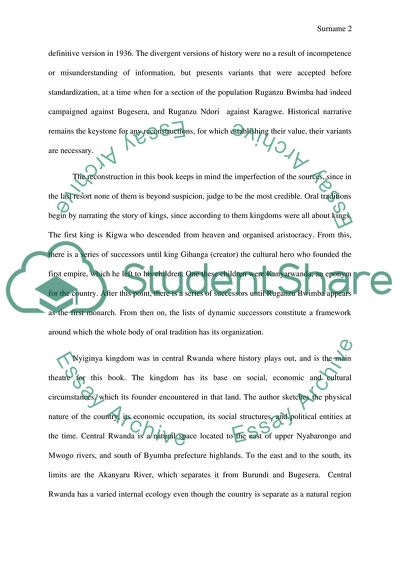Cite this document
(The Nyiginya Kingdom Essay Example | Topics and Well Written Essays - 2000 words, n.d.)
The Nyiginya Kingdom Essay Example | Topics and Well Written Essays - 2000 words. Retrieved from https://studentshare.org/history/1765928-antecedents-to-modern-rwanda
The Nyiginya Kingdom Essay Example | Topics and Well Written Essays - 2000 words. Retrieved from https://studentshare.org/history/1765928-antecedents-to-modern-rwanda
(The Nyiginya Kingdom Essay Example | Topics and Well Written Essays - 2000 Words)
The Nyiginya Kingdom Essay Example | Topics and Well Written Essays - 2000 Words. https://studentshare.org/history/1765928-antecedents-to-modern-rwanda.
The Nyiginya Kingdom Essay Example | Topics and Well Written Essays - 2000 Words. https://studentshare.org/history/1765928-antecedents-to-modern-rwanda.
“The Nyiginya Kingdom Essay Example | Topics and Well Written Essays - 2000 Words”. https://studentshare.org/history/1765928-antecedents-to-modern-rwanda.


